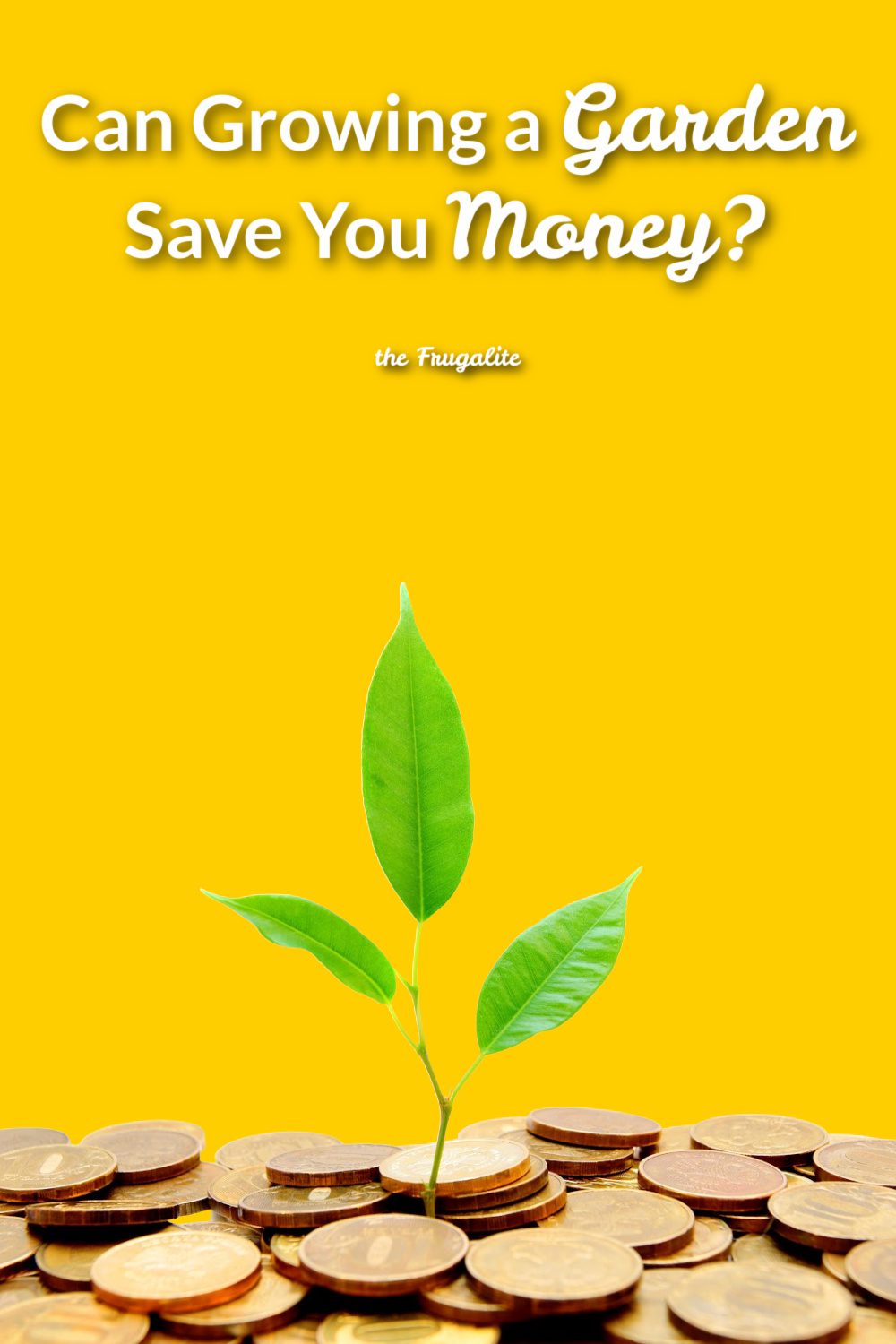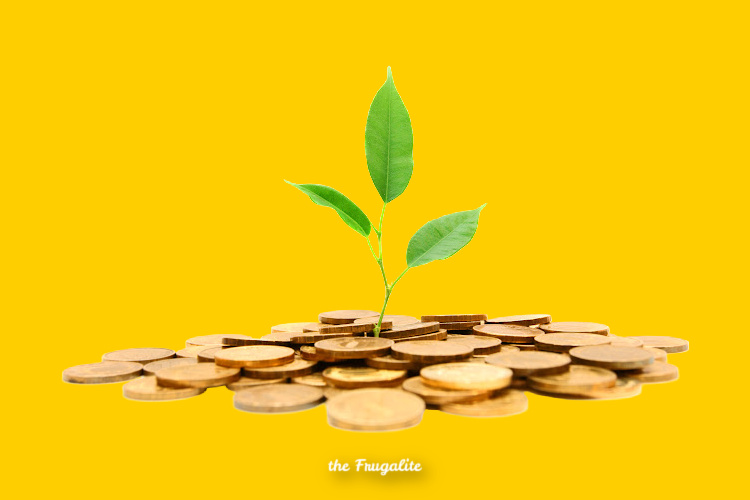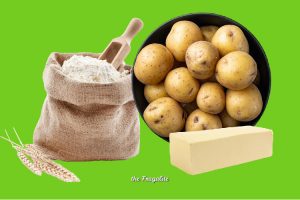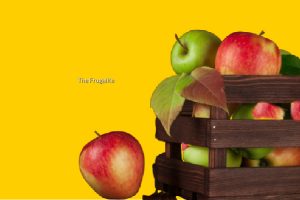(Psst: The FTC wants me to remind you that this website contains affiliate links. That means if you make a purchase from a link you click on, I might receive a small commission. This does not increase the price you’ll pay for that item nor does it decrease the awesomeness of the item. ~ Daisy)
With the ever-increasing food prices at the local supermarkets, many probably wonder, “Can growing a garden save you money?” Perhaps this idea has long floated around in your head. But after a few trips to your local garden store, you quickly realized just how expensive random gardening items seemed to be.
Let’s take a look at my gardening records from 2018
Yes, I keep gardening records. I like to know every penny I’ve sunk into the ground and what I received in return. I’ve found that it helps me avoid unnecessary expenditures and focus on the crops (and specific breeds of crops) that will help me get the most produce out of my money. It was in 2018 that I added a garden to my property. Let’s see how it performed.
My initial expenses
- Seed: $25.08
- 80 tomato plants: $18.00
- Garden soil: $127.93
- Dandelion weeder: $8.99
- Blueberry bushes: $49.97
- 5-gallon bucket: $2.98
- Sweet potatoes: $8.32
- TOTAL: $241.27
As you can see, I put quite a bit of investment into my garden this year, really banking on raising a lot of tomatoes. I hoped to sell them at a local farmer’s market. A terrific battle against deer, bunnies, dry weather, and poor soil dashed my hopes that year.
However, here is how it panned out for my garden by year’s end
I calculated the cost by going to my local grocery store and writing down the cost of all organic items I had grown. When multiplied by the amount I had grown, I was able to determine the monetary value of my produce.
As you can see, even with a hefty first-year investment in soil, a dismal failure of a tomato crop, an investment in blueberry bushes that didn’t produce, and a failed potato crop, I still came out ahead money-wise. We had greens coming out of our ears that year. Since we eat a lot of them around my house, we saved a hefty chunk of change. In fact, our lettuce crop alone made the money we put into our garden well worth the initial investment.
Money’s Worth Produced
- Lettuce (20.5 gallons): $245.59
- Asparagus (1/2 a handful): N/A
- Spinach (7.5 gallons): $89.85
- Sweet Potatoes (1 bushel): $24.00
- Microgreens: $27.93
- Mixed greens (8 gallons): $95.84
- Radishes (1 gallon): $6.76
- Tomatoes (151 maters): $188.75
- Potatoes (1 gallon): $3.66
- Carrots (1 gallon): $7.17
- TOTAL: $689.55
Below are my tips for wisely investing in gardening.
Shop around for seeds
It’s surprising to me to see how prices of Black Seeded Simpson lettuce varies so drastically from seller to seller for the same weight of seed. I’ve found the same to be true for all other forms of seed as well. While you’ll still save money on food regardless of how much money you spend on seed, you can save a significant amount of money by purchasing your seed at a reasonable price.
If you can save $1/packet by purchasing from somebody other than Burpee and you’re buying 20 packets of seed, well, that’s $20 you could be saving. We recommend heirloom seeds from a family-owned business, Seeds for Generations.
Raised beds are a worthy investment
While they’re most certainly not necessary to grow a garden, I’ve found I enjoy the way my raised bed garden looks more than simple dirt rows. The aesthetics draw me towards my raised bed garden more regularly. As a result, that garden is better cared for than my other garden and has fewer weeds.
My raised bed garden produces a greater harvest than I get from my row garden. Purchasing lumber is an additional infrastructure cost, but I’ve found that it pays dividends down the road.
Plant your seeds efficiently
The more seed you can put into the ground, the more plants you’ll produce. You have to know how to do this without choking out your plants, though. The best resource I’ve found on learning to plant seeds efficiently is Bartholomew’s Square Foot Gardening.
I highly recommend it to every potential gardener I meet, as I’ve yet to find a resource that does as fantastic of a job of explaining the efficient use of garden space as does Bartholomew.
The basic premise is that planting in rows is inefficient. If you can plant your seeds in a zig-zag pattern, you’ll be able to fit many more plants into a given location than you would be able to otherwise.
Don’t be afraid to buy those tools
If you find a tool out there you believe will save you time and effort in accomplishing a gardening task – and it does not have a motor attached to it – then I say go ahead and buy the product, as it will be money well spent.
However, I do not say the same about tools that have motors. Motorized tools typically cost thousands of dollars. It’ll take you years’ worth of gardening to pay off that stupid piece of equipment. Stick with manual labor as much as is possible. Your wallet will thank you.
Find the brand you enjoy working with
There are some brands I enjoy working with and some I don’t. It’ll take a few years to discover which ones you’re a fan of and which you dislike. Whether it be the shipping policies, the germination rate, the amount of seed per packet, or the customer service, there will be a host of intricacies that will help you decide which brand is the best for you.
Have fun discovering what that is.
Experiment with different kinds of crops
I would have never known that Black Seeded Simpson was one of my favorite lettuces to grow had I not planted half a dozen different types over the years. Shoot, I wouldn’t have ever known that leaf lettuce was something I preferred to head lettuce had it not been for experimentation.
Don’t be afraid to experiment in your garden. You’ll often find breeds of corn, lettuce, and eggplant that not only do very well within your region but that you prefer the taste of or of working with compared to other breeds of plants.
So, can growing a garden save you money?
As shown above, the answer is a resounding YES. Year after year, when I go back over my records for how much money I put into the ground that past growing season ad what I harvested, I find that the crops produced gave me a return on investment that was regularly 250+%.
That’s fantastic. Where else can you get those kinds of returns? So, if you’re considering growing your own garden but are hesitant about whether or not you can save any money from doing so, I assure you that you can. In fact, you may be surprised at just how much it’s possible to save. Check out this article and this one for more advice for gardening on the cheap.
Have you found that gardening saves you money? What do you grow? What kind of setting are you in, urban, suburban, or rural? Let’s talk about frugal gardening in the comments.












10 thoughts on “Can You Save Money Growing a Garden?”
What a great article! Yes a garden can save you money, especially when times are tight and shortages are many. A couple of points in addition to those you’ve mentioned:
1) Seed saving. Why buy what you can get for free? Let a few of those black seeded Simpson plants go to seed and you won’t have to buy anything next year. Heirloom varieties work best for this, although stabilized hybrids can work too.
2) The health benefits are difficult to place a monetary value on but very real! Soil contains antidepressant microbes, exercise is a good thing, and sunshine on my shoulders makes me happy!
Preserving the harvest is beyond the scope of this article, but it’s a great skill to have! Once I tasted home made strawberry jam I couldn’t handle the store bought stuff anymore. I encourage everyone to go for it! Even in small spaces, there are ways. Lots of ways!
and, as global warming causes more and more chaos in the country and its supply systems, gardening may be the only way some people can get their hands on fresh produce. i suspect community and local food production will be crucial before long, so why not get started learning now?
I didn’t have to buy any tomatoes or lettuce all summer long. I count that as a win! Unfortunately, not enough maters to preserve, but I could only do a small container garden this year.
It’s not just about the money. The tomatoes from the grocery store taste like cardboard compared to the nutrient rich, flavorful tomatoes from my garden.
I love love love my garden. And as a bonus I get fresh food and fresh seeds.
The season is winding down. 20° nights at least three night next next week.
I just canned 5 quarts of soup two days ago besides eating soup for two days. 2 lg. onions, 5 cloves of garlic,10 LG tomatoes, 3 okra, 2 cayenne peppers, 2 jalapeños, and a large bell pepper, greens from 3 bok choy, 2 yellow crookneck squash, 2 lbs diced pork roast, and a 3 lb bag of dry baby lima beans. Everything but the pork and lima beans came from the garden. I have many more jars to show for this years garden. I’m saving seed for next year. Paper plates sitting all around saving seed. Lettuce and bock choy going to seed so I’ll pot up some to mature seed with the cold heading this way. Herbs will move in for the winter. Jerusalem artichokes will sprout again in the spring. I could dig some to eat through the winter but I’ll aim to save them for next year and beyond. The strawberries have put out runners. So they are healthy and multiplying.
My tools are mostly years old. They do last. I save seed. This year year I bought 34 packets of seed for wild edibles that I’m hoping will naturalize. I bought 7 packets of new seed to try. I ordered some turmeric. I’m going to transplant them into a large pot. They are pretty. I keep many things like ginger in nice containers to spend the winters inside.
I figure hundreds of dollars in edibles each year. I don’t spend much anymore as I have the tools and save most of the seed. Some are annuals and some like beets are biennial.
Here’s the thing about a garden. You have to go out and tend it every day. It isn’t a weekend project but rather an investment. Investments need input, including you going out and watering, weeding, getting rid of pests, et cetera. You don’t have to live in a garden, just take care of it.
We learned that lesson last year, and did much better this year. Did we save money? No, but our plot is 4′ x 4′. Working on expanding it.
If for nothing else my garden my outdoor time in the garden would hold value because I enjoy it so much. But the fact is I eat fresh from early pea as to fall squash then stored food for the rest of the we year. It’s well worth learning to garden and preserve your produce.
I like Baker Creek Heirloom Seeds. I agree about the Square Foot Gardening method and picking varieties that work best in your area/soil. Last year, I planted seedlings I grew in the house into the garden. I had an extra couple of seedlings that wouldn’t “fit” in the garden (without potentially crowding the others), so I threw them in a pot. WOW! I have never done well with zucchini. Everyone says it’s “SO EASY” to grow, but I have never been able to do well. I learned last year that my soil is the reason. The seedlings I planted in the ground flowered and died without much in the way of fruit. The seedlings I planted in the pot produced ENORMOUS, prolific zucchini. In retrospect, I think it is because we have a huge oak tree in our yard and the acorns change the acidity in the soil such that it is unfavorable for zucchini.
I finally started gardening. I am making use of buckets from the local bakery for part of my pots, making my own compost, and regrowing kitchen scraps.
As an experiment I tried sprouting some pepper seeds that were in peppers that had dried out in the fridge. I have six baby pepper plants growing right now form that experiment. I’m also fermenting some tomato seeds that came from heirloom maters I bought from Misfits Market – the plan is to make seedlings that can go into my autumn planting. If you get fifteen seedlings from one tomato that’s a heck of a lot better than paying $5 a plant at the local garden store! Sure you need time and patience, dirt and little pots, but you can make fantastic seed starting cups from yogurt containers or disposable cups you can buy at the store dirt cheap.
Using tricks like that can lower costs and also reduce food waste!
We had a fairly large garden. Every year we had enough to share with friends and neighbors as well as freezing quite a few things. When my husband retired, his office-mates complained that they would be seeing their grocery bills go up. One them “paid” for his by shredding all of his leaves, bagging them, and delivering them to our compost pile. One neighbor traded things he did for a fairly constant supply of summer vegetables. Why did we have such a large garden? We enjoyed that form of exercise and enjoyed sharing the results.